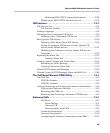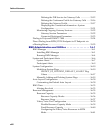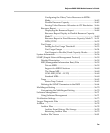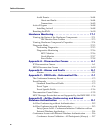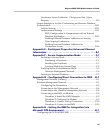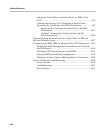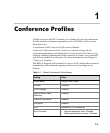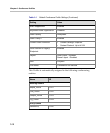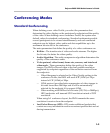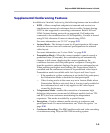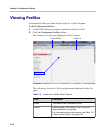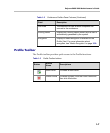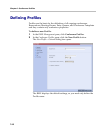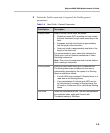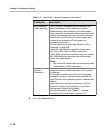
Polycom RMX 2000 Administrator’s Guide
1-3
Conferencing Modes
Standard Conferencing
When defining a new video Profile, you select the parameters that
determine the video display on the participant’s endpoint and the quality
of the video. When defining a new conference Profile, the system uses
default values for standard conferencing. Standard conferencing enable
several participants to be viewed simultaneously and each connected
endpoint uses its highest video, audio and data capabilities up to the
maximum bit rate set for the conference.
The main parameters that define the quality of a video conference are:
• Bit Rate - The transfer rate of video and audio streams. The higher
the bit rate, the better the video quality.
• Audio Algorithm - The audio compression algorithm determines the
quality of the conference audio.
• Video protocol, video format, frame rate, annexes, and interlaced
video mode - These parameters define the quality of the video
images. The RMX will send video at the best possible resolution
supported by endpoints regardless of the resolution received from
the endpoints.
— When Sharpness is selected as the Video Quality setting in the
conference Profile, the RMX will send 4CIF (H.263) at 15fps
instead of CIF (H.264) at 30fps.
— H.264 protocol provides better compression of video images in
bit rates lower than 384 Kbps and it will be automatically
selected for the endpoint if it supports H.264.
— When working with RMXs at low bit rates (128, 256, or 384Kbps),
HDX endpoints will transmit SD15 resolution instead of 2CIF
resolution.
When using 1x1 conference layout, the RMX transmits the same
resolution it receives from the endpoint.
• Lost Packet Recovery (LPR) - LPR creates additional packets that
contain recovery information used to reconstruct packets that are lost
during transmission.



